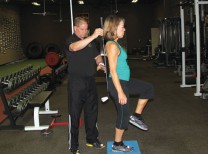Obesity rates in America are among the highest in the world. Cardiovascular disease, diabetes and cancer are household conditions for most. The sedentary, under-slept, over-stressed, ever-indulgent lifestyle has become “The American Way.” And never before have we so needed a new relationship with exercise!
Research now offers a new twist on an old favorite causing medical experts and the average health-conscious individual to take a second look. We know that aerobic exercise has a marked impact on cardiovascular disease risk – improving serum lipid profiles and blood pressure and inflammatory markers, as well as reducing risk of stroke, acute coronary syndrome and overall cardiovascular mortality. Additionally, this type of exercise can not only prevent metabolic syndrome and diabetes, it can also be used as treatment.
The new twist is referred to as “HIIT” and is taking the country by storm. It is High Intensity Interval Training which involves repeatedly exercising at max intensity for from 30 seconds to several minutes followed by one or more minutes of recovery exercise (low intensity exercise). HIIT can be done both anaerobically (lifting weights) and aerobically (running/cycling) or even a combination of the two.
HIIT is ideal for long-term compliance because the average workout is typically completed within 20-40 minutes, eliminating the need for busy Americans to spend a large portion of their already-packed day in the gym. It is also generally a varied activity as you change up the intervals with every session in the gym keeping boredom to a minimum.
The medical benefits of HIIT include reduction of subcutaneous fat (the kind you can grab around the waistline), improved cardiovascular fitness, and improved effectiveness in your body’s use of insulin to reduce elevated blood sugar. In comparison to your typical moderate intensity workout (like the treadmill), HIIT burns more calories and increases fat burning and energy expenditure, even after you have left the gym. This phenomenon is called EPOC (excess-post exercise oxygen consumption). You increase your metabolism for up to 24 hours after interval training, whereas continuous moderate exercise results in little of this effect.
HIIT also decreases total cholesterol and LDL-cholesterol, while increasing HDL-cholesterol and improving endothelial function, blood pressure and glucose regulation. Perhaps most importantly, studies show increased exercise energy expenditure like HIIT (as assessed by metabolic equivalents or METs) reduces the risk of cardiovascular events and mortality.
The potential downfall of HIIT work-outs is that they are 100% output and take a high amount of motivation to complete. Because of their intensity, there is a greater incidence in injury if the individual is just starting to work out after a long period of inactivity, or if the individual hasn’t warmed up prior to the interval training.
High intensity interval training has been shown to have medical benefits for both healthy and ‘at risk’ populations. As a preventative primary care physician, I encourage patients to utilize HIIT exercise 3-4 times per week for optimal wellness. As with any exercise program, it is important to first consult your health care professional.
Nicole Ortiz, ND is co-founder of Live Well Clinic and a Naturopathic Primary Care Doctor. For more information visit www.livewellclinic.org. (760) 771-5970
Sources: 1) Molmen-Hansen HE, Stolen T, Tjonna AE, et al. Aerobic interval training reduces blood pressure and improves myocardial function in hypertensive patients. Eur J Prev Cardiol 2012;19:151–60.; 2) Perri MG, Anton SD, Durning PE, et al. Adherence to exercise prescriptions: effects of prescribing moderate versus higher levels of intensity and frequency. Health Psychol 2002;21:452–8.; 3) O’Donovan G, Owen A, Bird SR, et al. Changes in cardiorespiratory fitness and coronary heart disease risk factors following 24 wk of moderate- or high-intensity exercise of equal energy cost. J Appl Physiol 2005;98:1619–25; 4) Manson JE, Greenland P, LaCroix AZ, et al. Walking compared with vigorous exercise for the prevention of cardiovascular events in women. N Engl J Med 2002;347:716–25.; 5) Tanasescu M, Leitzmann MF, Rimm EB, Willett WC, Stampfer MJ, Hu FB. Exercise type and intensity in relation to coronary heart disease in men. JAMA 2002;288:1994–2000; 6) Gibala MJ, McGee SL. Metabolic adaptations to short-term high-intensity interval training: a little pain for a lot of gain? Exerc Sport Sci Rev 2008;36:58–63.














































Comments (0)